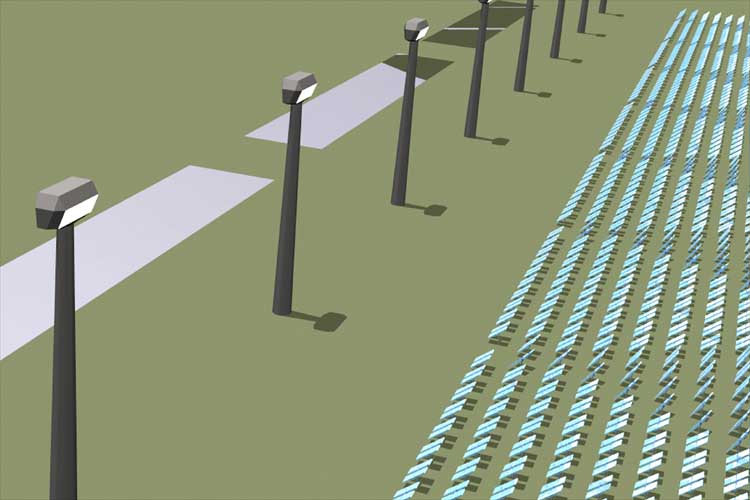
Australia’s solar industry - Increases in Funding
The amount of solar energy that hits Australia alone in one summer day alone is about half the total global annual energy demand. I'll say that again, because most people can't believe it. The whole world in half a year uses about the same amount of energy as the solar energy that hits Australia in one summer day.
IAN LOWE, AUSTRALIAN CONSERVATION FOUNDATION
The Opposition's shadow environment minister, Peter Garrett, thinks enough is enough, we must stop our technology moving offshore:
In 1988 the buried contact solar cell technology left for Spain.
Soon after, evacuated tube technology went to China
Evacuated glazing was snapped up by Japan.
In 2001, Australia's Dr Zhi took his solar cells to China and,
by 2004, crystalline silicone-on-glass technology went to Germany.
The Commonwealth has awarded only almost $18 million funding to five projects under its Advanced Electricity Storage Technologies program. Advanced storage technologies for electricity applications include, but are not limited to, batteries, electro-mechanical, chemical and thermal storage technologies in either on-grid or off-grid situations.
The thing about solar is that we can grow very, very rapidly. Eventually we can start putting in gigawatt plants at the rate of one per year. We know how to do that already.
DAVID MILLS: 31/01/2007 http://www.abc.net.au/7.30/content/2007/s1837616.htm Reporter: Matt Peacock
B1b4_s1
Solar Power Station Australia ~ concept design

Mr Rudd, Federal Opposition Leader, has launched a $50 million plan for a Labor government to help households install solar power.
L abor
says the plan would cut 25 per cent off the cost of a solar power
system and benefit about 12,000 households over four years.
abor
says the plan would cut 25 per cent off the cost of a solar power
system and benefit about 12,000 households over four years.
Labor's environment spokesman, Peter Garrett, says greenhouse emissions savings from the plan will be the equivalent of taking 4,000 cars off the road.
FINALLY ~ SOLAR RECOGNITION
The Government has revealed a range of measures to tackle climate change will be part of 2007’s Budget, including spending $150 million over the next five years to increase the use of solar power in homes, schools and community buildings.
As part of the climate change measures, the solar rebate scheme will be doubled to up to $8,000 per household.
But a sustainable energy expert says the Government must do more to encourage growth in Australia's solar energy industry.
Director of the Centre for Sustainable Energy Systems at the Australian National University (ANU) Andrew Blakers says the Government must also support solar research and product commercialisation.
Professor Blakers says Australia is being left behind the rest of the world.
"The Europeans and the Japanese and parts of the United States are really starting to come alive, this is an industry that's doubling in size every 18 months," he said.
"It's worth about $25 billion last year, it's going to hit $100 billion by about 2011 and will hit $1 trillion in 2020. Tuesday, May 8, 2007. 9:29am (AEST)
B1b4_s2
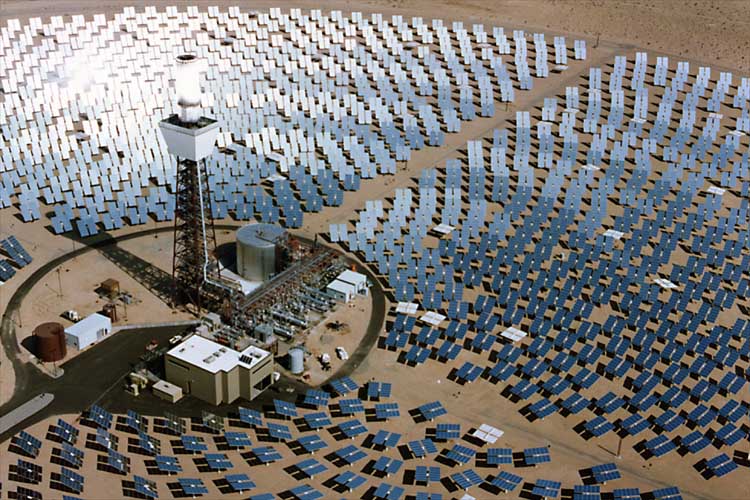
Solar Power Plant~ Spain
When complete, the Sanlucar la Mayor Solar Platform will prevent the emission of more than 600,000 metric tons of the greenhouse gas carbon dioxide into the atmosphere each year. These emissions would have
resulted from burning fossil fuels to supply electricity to the 180,000
homes that will be served by the Solar Platform.
Mojave USA
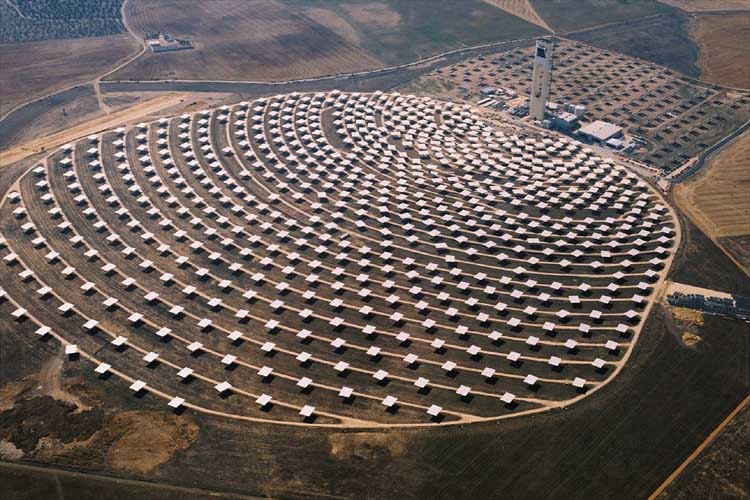
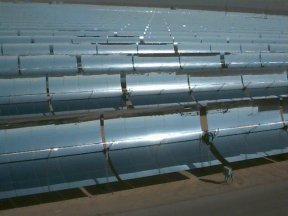
The parabolic trough is used in the largest solar power facility in the world located in the Mojave Desert at Kramer Junction, California. This facility has operated since the 1980’s and accounted for the majority of solar electricity produced by the electric power sector in 2004
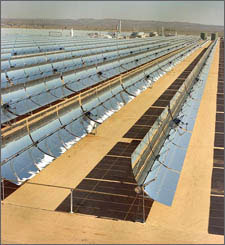
This solar thermal power plant located in the Mojave Desert in Kramer Junction, California, is one of nine such plants built in the 1980s. During operation, oil in the receiver tubes collects the concentrated solar energy as heat and is pumped to a power block (in background) for generating electricity.
B1b4_s3